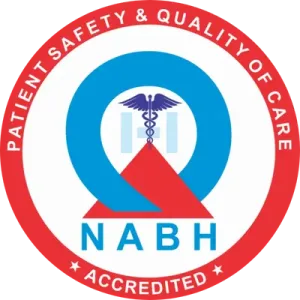Understanding Hernia: What it is, Symptoms, Types, Causes & Treatment
Are you experiencing unexplained pain or discomfort in your lower abdomen? It could be a hernia, a condition that affects millions of people worldwide. Understanding hernias is crucial to seek timely medical intervention and ease your discomfort. In this comprehensive guide, we will explore the symptoms, types, causes, and treatment options for hernias.
Understanding the Anatomy of a Hernia
To truly comprehend the nature of a hernia, it is important to first understand the anatomy of the condition. A hernia occurs when an organ or tissue pushes through a weak spot in the surrounding muscle or connective tissue. This can happen in various parts of the body, such as the abdomen, groin, or diaphragm.

Hernias can cause a visible bulge or lump, which may be more noticeable when standing or straining. They can also cause pain or discomfort, especially when lifting heavy objects or during physical activity.
Common Types of Hernias
Hernias can occur in different areas of the body, each with its own distinct characteristics and symptoms. The most common types of hernias include inguinal, femoral, umbilical, and hiatal hernias.
Inguinal Hernia: This is the most common type of hernia and affects the groin area. It occurs when the intestines and omentum push through a weak spot in the inguinal canal, which is located in the lower abdomen near the groin crease. Inguinal hernias are more common in men and can cause a visible bulge or lump in the groin area.
Femoral hernias: are a type of hernia that occur in the groin area, specifically through the femoral canal. They are more common in women than in men and typically present as a bulge or lump in the upper thigh or groin region.
Umbilical Hernia: This type of hernia occurs when part of the intestine or fatty tissue protrudes through a weak spot in the abdominal muscles near the belly button. Umbilical hernias are more common in infants and pregnant women, but can also affect adults. They can cause a visible bulge or lump around the belly button.
Diaphragmatic Hernia: Diaphragmatic hernias are different from the previous types mentioned, as they occur in the upper part of the abdomen. It happens when the stomach or abdominal content pushes through the diaphragm into the chest cavity. Diaphragmatic hernias can cause symptoms such as heartburn, chest pain, and difficulty respiration.
Understanding the different types of hernias is crucial for accurate diagnosis and appropriate treatment.
Causes and Risk Factors for Hernias
Hernias can develop due to a combination of factors, including both genetic predisposition and lifestyle choices. Some of the common causes and risk factors for hernias include:
Muscle Weakness: Weakness in the muscles can be a significant contributing factor to the development of hernias. This weakness can be present from birth or acquired over time due to aging, injury, or repetitive strain on the muscles.
Heavy Lifting and Straining: Engaging in activities that involve heavy lifting or putting excessive strain on the abdominal muscles can increase the risk of developing a hernia. This is especially true if proper lifting techniques are not followed.
Excessive straining during variation in case of BPH (PROSTATE SIZE)
Chronic Coughing or Sneezing: Conditions that cause chronic coughing or sneezing, such as chronic obstructive pulmonary disease (COPD) or allergies, can put strain on the abdominal muscles and increase the risk of hernia development.
Obesity: Excess body weight can put additional pressure on the abdominal muscles, making them more prone to weakness and hernia formation.
Pregnancy: Pregnancy can lead to weakened abdominal muscles and increased pressure on the abdomen, making pregnant women more susceptible to developing hernias, particularly umbilical hernias.
Understanding the causes and risk factors associated with hernias can help individuals make informed lifestyle choices and take necessary precautions to prevent their occurrence.
Signs and Symptoms of a Hernia
Identifying the symptoms of a hernia is crucial for prompt diagnosis and appropriate medical intervention. While the specific symptoms may vary depending on the type of hernia, some common signs to look out for include:
Visible Bulge or Lump: The most prominent symptom of a hernia is the appearance of a visible bulge or lump in the affected area. This bulge may become more noticeable when standing, coughing, or straining.
Pain or Discomfort: Hernias can cause varying degrees of pain or discomfort, ranging from mild to severe. The pain may worsen with physical activity, lifting, or bending over.
Aching or Burning Sensation: Some individuals with hernias may experience aching or burning sensations in the affected area, which can be exacerbated by certain movements or activities.
Feeling of Pressure or Fullness: Hernias can create a sensation of pressure or fullness in the affected area, leading to overall discomfort.
Difficulty with Bowel Movements: In some cases, hernias can cause changes in bowel movements, such as constipation or difficulty passing stool.
If you experience any of these symptoms, it is important to consult a healthcare professional for an accurate diagnosis and appropriate treatment.
Diagnosing a Hernia
Diagnosing a hernia typically involves a physical examination by a healthcare professional. During the examination, the doctor may ask about your symptoms, medical history, and perform a physical assessment of the affected area. In some cases, additional diagnostic tests may be required to confirm the presence of a hernia or assess its severity.
Physical Examination: During the physical examination, the doctor may look for visible bulges or lumps in the affected area and apply gentle pressure to check for any discomfort or pain.
Imaging Tests: In some cases, imaging tests such as ultrasound, X-ray, or CT scan may be ordered to provide a detailed view of the affected area and help confirm the presence of a hernia.
Endoscopy: If a hiatal hernia is suspected, an endoscopy may be performed to visualize the esophagus and stomach and assess the extent of the hernia.
Accurate diagnosis is essential to determine the appropriate treatment plan for a hernia.
Surgical Procedures for Hernia Repair
If surgical intervention is necessary, there are different surgical procedures available for hernia repair. The choice of procedure will depend on various factors, including the type and size of the hernia, the patient’s overall health, and the surgeon’s expertise. Hernia treatment at Mukat Hospital involves a comprehensive approach to diagnose and treat hernias effectively. Best hernia hospital in Chandigarh, has experienced surgeons and a dedicated team of healthcare professionals who specialize in hernia surgeries.
Some common surgical procedures for hernia repair include:
Open Hernia Repair: In an open hernia repair, a single incision is made over the hernia site to access the weakened muscles and repair the hernia. This procedure is typically performed under general anesthesia and involves placing a mesh or sutures to strengthen the abdominal wall.
Laparoscopic Hernia Repair: Laparoscopic hernia repair is a minimally invasive procedure that utilizes small incisions and specialized instruments to access and repair the hernia. This procedure offers faster recovery times and reduced postoperative pain compared to open repair.
Robotic-Assisted Hernia Repair: Robotic-assisted hernia repair is a newer surgical technique that combines laparoscopic surgery with the precision and flexibility of robotic technology. This approach allows for enhanced visualization and greater surgical precision.
The choice of surgical procedure will depend on various factors, including the patient’s individual needs and the surgeon’s expertise.
Read Also: Laparoscopy surgery hospital in Chandigarh
Tips for Preventing Hernias
While not all hernias can be prevented, certain lifestyle choices and precautions can help reduce the risk of their occurrence. Incorporating the following tips into your daily routine may help prevent hernias:
Maintain a Healthy Weight: Excess weight can put additional strain on the abdominal muscles, making them more susceptible to weakness and hernias. Regular exercise and a balanced diet can help manage weight and reduce excess abdominal fat, thereby reducing the strain on the muscles and decreasing the risk of hernias.
Practice Safe Lifting Techniques: When lifting heavy objects, always remember to bend your knees, keep your back straight, and use your leg muscles to lift. Avoid lifting objects that are too heavy for you or ask for assistance when needed.
Quit Smoking: If you are a smoker and concerned about the risk of hernias, it is highly recommended quit smoking that can lead to significant health benefits and improve your overall quality of life.
Manage Chronic Coughing or Sneezing: If you have a condition that causes chronic coughing or sneezing, such as allergies or COPD, it is important to manage it effectively. Working with a healthcare professional to control these symptoms can help reduce strain on the abdominal muscles.
Avoid Straining during Bowel Movements: Straining during bowel movements can put excessive pressure on the abdominal muscles. To avoid this, maintain a healthy diet high in fiber, stay hydrated, and establish regular bowel habits.
Incorporating these preventive measures into your lifestyle can help reduce the risk of hernias and promote overall abdominal health.
Conclusion: Living with a Hernia
Living with a hernia can be challenging, but with proper understanding, timely medical intervention, and lifestyle modifications, it can be effectively managed. By recognizing the symptoms, understanding the types and causes, and exploring the available treatment options, individuals can take control of their hernia and improve their quality of life.
If you suspect you may have a hernia or are experiencing symptoms, it is important to consult a healthcare professional for an accurate diagnosis and appropriate treatment plan. Remember, early intervention is key to preventing complications and ensuring a successful recovery.
Stay informed, stay proactive, and take the necessary steps in managing your hernia effectively. With the right knowledge and support, you can navigate this condition with confidence and regain control of your well-being.
Understanding hernias is the first step towards a healthier tomorrow. The best hernia treatment at Mukat Hospital would depend on the individual’s specific condition, medical history, and the surgeon’s recommendation. It is advisable to consult with a qualified hernia specialist at the hospital to determine the most appropriate treatment option.












